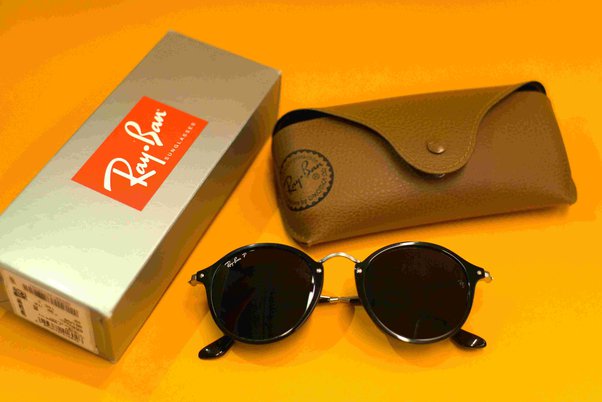In the world of fashion and accessories, few brands hold the iconic status and timeless appeal of Ray-Ban. Renowned for their stylish designs and high-quality eyewear, Ray-Ban has become synonymous with sophistication and cool. However, beyond their aesthetic appeal lies a fascinating aspect that many consumers may overlook – the Ray-Ban barcode. In this comprehensive guide, we delve into the intricacies of Ray-Ban barcodes, exploring their significance, structure, and the role they play in the brand’s authenticity and consumer trust.
Understanding Barcodes
Before delving into the specifics of Ray-Ban barcodes, it’s essential to grasp the fundamentals of barcoding. Barcodes are ubiquitous in modern retail, serving as a means of encoding information about products in a format that can be quickly and accurately scanned by barcode readers. These encoded data typically include details such as the manufacturer, product type, and unique identification numbers.
The Importance of Barcodes in Authenticating Ray-Ban Products
In an age where counterfeit goods proliferate in the market, authentication has become paramount for consumers seeking genuine Ray-Ban products. Barcodes play a pivotal role in this process, serving as a key indicator of authenticity. By verifying the barcode against Ray-Ban’s official database, consumers can ensure that they are purchasing legitimate products, thereby safeguarding themselves against counterfeiters.
Deciphering Ray-Ban Barcodes
Ray-Ban barcodes adhere to industry standards, employing the Universal Product Code (UPC) or European Article Number (EAN) formats. These formats consist of a series of black bars and white spaces, each representing a numeric or alphanumeric character. Understanding the structure and components of Ray-Ban barcodes is crucial for discerning genuine products from counterfeit ones.
Prefix: The first few digits of the barcode typically denote the manufacturer or company that owns the brand. For Ray-Ban products, this prefix corresponds to Luxottica Group, the Italian eyewear conglomerate that acquired the brand in 1999.
Product Code: Following the prefix, the product code specifies the particular model or SKU (Stock Keeping Unit) of the Ray-Ban eyewear. This code varies depending on factors such as frame style, lens color, and size.
Country Code: Some barcodes include a country code, indicating the country of origin for the product. Ray-Ban products are manufactured in various countries, including Italy and China, among others.
Check Digit: The final digit of the barcode serves as a check digit, calculated based on the preceding digits to ensure the accuracy of the barcode.
Verifying Ray-Ban Barcodes: Tools and Techniques
With counterfeiters becoming increasingly adept at replicating authentic packaging and branding, relying solely on visual inspection is no longer sufficient for verifying Ray-Ban products. Fortunately, consumers have access to various tools and techniques for authenticating barcodes and safeguarding themselves against counterfeit eyewear.
Official Website: Ray-Ban provides an online authentication tool on its official website, allowing consumers to verify the authenticity of their eyewear by entering the barcode or serial number.
Mobile Apps: Several mobile applications are available that enable users to scan barcodes and retrieve product information instantly. These apps often integrate with databases containing information about genuine Ray-Ban products, facilitating quick and convenient authentication.
Third-Party Verification Services: Some companies specialize in providing authentication services for luxury brands, including Ray-Ban. By submitting the barcode or product details to these services, consumers can receive professional verification and peace of mind.
Combatting Counterfeiting: Ray-Ban’s Anti-Counterfeit Measures
Recognizing the threat posed by counterfeiters to its brand reputation and consumer trust, Ray-Ban has implemented robust anti-counterfeiting measures aimed at protecting its products and customers. These measures encompass a combination of technological innovations, legal initiatives, and consumer education efforts.
Holographic Labels: Ray-Ban incorporates holographic labels into its packaging and products, featuring intricate designs and security features that are difficult to replicate. These labels serve as visual cues of authenticity and deter counterfeiters from producing unauthorized copies.
Serial Numbers: In addition to barcodes, Ray-Ban assigns unique serial numbers to its products, allowing for traceability and authentication. Consumers can cross-reference these serial numbers with Ray-Ban’s records to verify the legitimacy of their eyewear.
Collaboration with Law Enforcement: Ray-Ban collaborates closely with law enforcement agencies worldwide to identify and dismantle counterfeit operations. By sharing intelligence and conducting joint enforcement actions, Ray-Ban aims to disrupt the supply chains of counterfeit eyewear and hold perpetrators accountable.
Consumer Awareness Campaigns: Ray-Ban actively engages in consumer awareness campaigns to educate the public about the risks associated with counterfeit eyewear and the importance of purchasing from authorized retailers. Through social media, advertising, and public relations efforts, Ray-Ban seeks to empower consumers to make informed purchasing decisions.
Conclusion
In a marketplace rife with counterfeit goods, discerning genuine Ray-Ban products from counterfeit imitations can be a daunting task. However, armed with knowledge about Ray-Ban barcodes and authentication techniques, consumers can navigate this landscape with confidence and peace of mind. By leveraging technology, collaboration, and consumer education, Ray-Ban remains steadfast in its commitment to combating counterfeiting and upholding the integrity of its iconic brand. So the next time you don a pair of Ray-Ban sunglasses, remember that the barcode tells a story of authenticity, quality, and timeless style.







